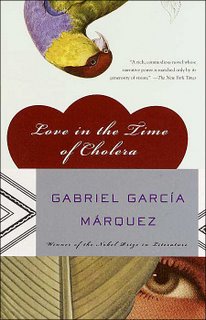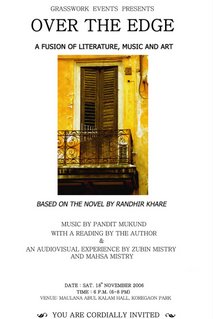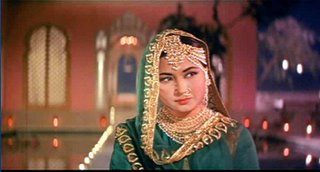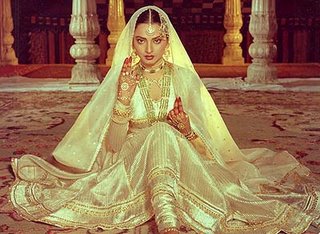
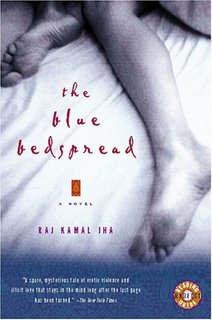



Ok. We all know Romeo’s comments on names: What’s in a name? Names are nevertheless important. They are our windows to understanding things.
This is particularly true in case of books, where a few words or a phrase must explain what the book is all about. So, the pre-requisite is that the name must sound innovative and catchy, something that forces the reader/buyer to pick it up and browse through its pages. Names are the first step to knowing a book.
I remember picking up Douglas Adams’s The Hitchhiker’s Guide to Galaxy just for the name. Galaxy? Sounds like a science fiction. But hitchhiking to galaxy? I mean, can you just ask for a lift, to say, March or Venus? Isn’t it inventive enough? And the book lives up to its expectations, unlike some others, like, Robin Sharma’s The Monk Who Sold His Ferrari. Sharma’s title is very symbolic and since it’s just a self-help book, the meaning goes awry.
Novelist Kavery Nambisan’s titles are highly poetic. One of her books is called Mango-Coloured Fish, another Scent of Pepper. Where did she find her titles? Kavery confesses that they are not her own, but was suggested by David Davidar, the then head of Penguin India. Mr Davidar must be a man with great gastronomic taste and I am sure he loves mangoes. His own novel is called The House of Blue Mangoes.
Kiran Desai’s Booker winner The Inheritance of Loss sounds odd at the first glance. How on earth you inherit loss? But as you enter her world, the title begins to make sense. It’s about the second-generation Indian immigrants, who inherit their parent’s loss of their homeland.
Probably no Booker winner is as innovative as Alan Hollinghurst who received the award for The Line of Beauty in 2004. His first novel is The Swimming-Pool Library. I failed to find the connection between swimming-pool and library. But the book sunk me completely. His next novel is The Folding Star (I confess, I had to fold the book halfway through. It was just beyond me!).
Coming to an individual writer’s way of naming his books, Vikram Seth seems to have exhausted the possibilities of articles ‘a’, ‘an’ and ‘the.’ Observe the names: The Golden Gate, A Suitable Boy, An Equal Music. Now, he has begun with numbers, staring with two, in Two Lives. Probably his next book would be called Three This or Three That.
There are some titles that outgrow the book and become the part of our popular vocabulary. Suketu Mehta calls Bombay Maximum City. Now, we use the epithet beyond the context of the book. William Dalrymple calls Delhi The City of Djinns. Dominique Lapierre calls Calcutta the City of Joy. R Raj Rao again calls Bombay soul city in One Day I Locked My Flat in Soul City.
Indian English fiction, especially those published abroad are notorious for exotic, highly romanticised titles. Sample this: Salman Rushdie’s The Ground Beneath Her Feet, Raj Kamal Jha’s The Blue Bedspread and If You Are Afraid of Heights, Uma Parameswaran‘s Rootless But Green are the Boulevard Trees.
A book is the product of an individual mind but titles are not. They are the part of a publisher’s marketing strategy, which is apparent in Kavery Nambisan’s titles. Pune based author R Raj Rao wanted to call his first novel Krishna and Sudama but his publishers did not want to take any risks, and it was renamed the Boyfriend. This is probably the same reason why Kavya Vishwanathan’s book has such a long title, How Opal Mehta Got Kissed… William Dalrymple, on the other hand, seems to be fascinated by the word Mughal. His last book was The White Mughal, and his latest tome is The Last Mughal.
Sasthi Brata calls his memoir My God Died Young, simply because he’s an atheist, while Dom Moraes’s autobiography is My Son’s Father, the ultimate example of circumlocution. Another interesting name for an autobiography is Dannie Abse’s called Ash on a Young Man’s Sleeve.
It is a popular custom to name a book with some quotations form poems. Gone with the Wind takes the title from a poem by Ernest Dowson. Rohinton Mistry borrowed the title Such a Long Journey from a T S Eliot poem.
I was highly impressed by Alan Sillitoe’s title The Loneliness of the Long-Distance Runner. It can’t be more symbolic than this. Another title that seduced me into purchasing the book is Jeanette Winterson’s Oranges are not the Only Fruit. And no, the book is not about oranges or other fruits.
This is particularly true in case of books, where a few words or a phrase must explain what the book is all about. So, the pre-requisite is that the name must sound innovative and catchy, something that forces the reader/buyer to pick it up and browse through its pages. Names are the first step to knowing a book.
I remember picking up Douglas Adams’s The Hitchhiker’s Guide to Galaxy just for the name. Galaxy? Sounds like a science fiction. But hitchhiking to galaxy? I mean, can you just ask for a lift, to say, March or Venus? Isn’t it inventive enough? And the book lives up to its expectations, unlike some others, like, Robin Sharma’s The Monk Who Sold His Ferrari. Sharma’s title is very symbolic and since it’s just a self-help book, the meaning goes awry.
Novelist Kavery Nambisan’s titles are highly poetic. One of her books is called Mango-Coloured Fish, another Scent of Pepper. Where did she find her titles? Kavery confesses that they are not her own, but was suggested by David Davidar, the then head of Penguin India. Mr Davidar must be a man with great gastronomic taste and I am sure he loves mangoes. His own novel is called The House of Blue Mangoes.
Kiran Desai’s Booker winner The Inheritance of Loss sounds odd at the first glance. How on earth you inherit loss? But as you enter her world, the title begins to make sense. It’s about the second-generation Indian immigrants, who inherit their parent’s loss of their homeland.
Probably no Booker winner is as innovative as Alan Hollinghurst who received the award for The Line of Beauty in 2004. His first novel is The Swimming-Pool Library. I failed to find the connection between swimming-pool and library. But the book sunk me completely. His next novel is The Folding Star (I confess, I had to fold the book halfway through. It was just beyond me!).
Coming to an individual writer’s way of naming his books, Vikram Seth seems to have exhausted the possibilities of articles ‘a’, ‘an’ and ‘the.’ Observe the names: The Golden Gate, A Suitable Boy, An Equal Music. Now, he has begun with numbers, staring with two, in Two Lives. Probably his next book would be called Three This or Three That.
There are some titles that outgrow the book and become the part of our popular vocabulary. Suketu Mehta calls Bombay Maximum City. Now, we use the epithet beyond the context of the book. William Dalrymple calls Delhi The City of Djinns. Dominique Lapierre calls Calcutta the City of Joy. R Raj Rao again calls Bombay soul city in One Day I Locked My Flat in Soul City.
Indian English fiction, especially those published abroad are notorious for exotic, highly romanticised titles. Sample this: Salman Rushdie’s The Ground Beneath Her Feet, Raj Kamal Jha’s The Blue Bedspread and If You Are Afraid of Heights, Uma Parameswaran‘s Rootless But Green are the Boulevard Trees.
A book is the product of an individual mind but titles are not. They are the part of a publisher’s marketing strategy, which is apparent in Kavery Nambisan’s titles. Pune based author R Raj Rao wanted to call his first novel Krishna and Sudama but his publishers did not want to take any risks, and it was renamed the Boyfriend. This is probably the same reason why Kavya Vishwanathan’s book has such a long title, How Opal Mehta Got Kissed… William Dalrymple, on the other hand, seems to be fascinated by the word Mughal. His last book was The White Mughal, and his latest tome is The Last Mughal.
Sasthi Brata calls his memoir My God Died Young, simply because he’s an atheist, while Dom Moraes’s autobiography is My Son’s Father, the ultimate example of circumlocution. Another interesting name for an autobiography is Dannie Abse’s called Ash on a Young Man’s Sleeve.
It is a popular custom to name a book with some quotations form poems. Gone with the Wind takes the title from a poem by Ernest Dowson. Rohinton Mistry borrowed the title Such a Long Journey from a T S Eliot poem.
I was highly impressed by Alan Sillitoe’s title The Loneliness of the Long-Distance Runner. It can’t be more symbolic than this. Another title that seduced me into purchasing the book is Jeanette Winterson’s Oranges are not the Only Fruit. And no, the book is not about oranges or other fruits.

